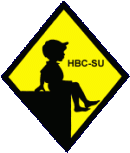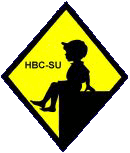
Some of the topics here cross over. When we talk about school levels there are cross overs with both types, grade/form and ages, but it is worth noting the levels separately. There are complications, because some of the different types of schools cut across the standard primary/secondary divide. And the terms have changed over time. The English education system is divided into four main parts, pre-school, primary, secondary, and tertiary. English children have to attend primary and secondary schools which runs from about 5 years old until the child is 16 years of age. The age limits differes some what from America and many other countries. Pre-school is optional until what is commonly called kindergarden. Parents can chose as to when their childern begin pre-school. Many pre-schools want the children to be out of nappes (diappers). But there are pre-schools that take children still in nappies. Primary school is basically from age 5-11 years of age. There are different primaries. Infant schools take the younger primary age group. Some schools like prep schools mix the primary and secondary ages. For the most part secondary schooling begins at abour 11-13 years of age, depending on the type of school. The state and secondary systems vary somewhat. Secondary education include middle and high schools (grammar schools and comprehensives) as well as public schools (private secondary schools.
School was a novel experiebce for most children around the world. Education spread in Europe, but with a few exceptions were fee paying institurins. England has a long hitory of schools dating back to the medieval era. Free public schools have a much more recent history. Wec find their origins in the German states (especially Prussia) and America (18th century)--an interestng origin. Public schools did not become wide spread until later (second half of the 19th century). England lagged behind the other major countries in public education until the Education Act (1870). Tis mandated free primary educatiin for englidh children. The Act did not address nursery education for younger children. We first see nurseru dschools for younger pre-chool children in England (mid-19th century. We first schiol we have found began (about 1854). The advent of the Industrial Revolution created a need for nursery schools. As people moved from the country side into the city, mothers many cases began to work. This created a need for childcare facilities. In the city families and friends were commonly less available. Some more were forced to lock little ones up while they were at work. Tragic incidents enbsued, but even when the children were not physicallky hsrmed, surely it was a traumatic experience. Nursery schools were not market driven. Well-to-do people cared for the children at home as the mothers did not work. The 19th century was an era of a range of social reform, beginniung most prominently with the Abolitionit movement, but also the problems that accompanied the industrial revolution. And a few determined women in British tows and cities took on this problem. They began creating places for the young children. Often they did not have much money. They might rent spaces, in some cases just a non-discriot room. Sometimes a house. In some cases a hoispital made space avilable. These facilities came to be called 'day nurseries'. The nursery was a place in the home that the children slept at night. These facilities took care of the children during the day, thus the term day nursery. This was an entirely new concept. Unlike schools, there was no established tradition of care. Jean Firmin Marbeau (1798-1875) was a philanthropist who pioneered the cr�che movement in France. He openedthe first creche� in Paris (1844). This was all the English movement which founded the first day nurseries had to go on.
We notice several different types of English primary and pre-primary schools in England. American would tend to call these schools elementary schools, although the term "primary school" is understood. There are both state and private (often referred to as independent) schools in England. The state primary schools are supplemented with Anglican and Catholic schools as well as a few other denominational schools which in England received substantial financial support. Private primary schools are also called preparattory schools in the sence that they prepare boys for the Public (private secondary) schools. Preparatoty schools do not incluse the eraly primary years which are called pre-prep and add some of the junior high years. There are also boarding schools, but this is discussed in the boarding school section.
The Public school has continued over centuries a the primary private secondary school, although early schools accepted younger boys. Public schools and grammar schools date from the 16th century. Some of the pubkic schools have impressive reputations. The grammar schools maintained high standards and became part of what was known as the tripartate system (grammar schools, secondary modern, and technical schools). State secondary schools are a much more recent phenomenon. At first children not attending private schools stayed in primary schools for what would become secondary education. The state secondary schools which did not appear until the end of World War I. State seondary schools have varied in type and philosophy as a sucession of English Governments wrestled with the issues of efficency and privlige. State ennvolvement in secondary education began with Fisher Act (1918). Some new schools were created, but much of the effort involved grants to grammar schools or cinverting some primary schools to secondary schools. A much more importantvstep was the Education Act (1944) at the end of World War II. The Act created th Tripartite System establish a three tier secondary system. This included selective grammar schools, secindary modern and secondary technival schools. Sclectivity was eventually abandined with the creation of comprhensives (1970s). Most English secondary schools are today comprehensives.
Navigate the HBC School Section:
[About Us]
[Activities]
[Chronology]
[Classrooms and buildings]
[Clothing styles]
[Countries]
[Debate]
[Economics]
[Garment]
[Gender]
[Hair]
[History]
[Home trends]
[Literary characters]
[School types]
[Significance]
[Transport and travel
[Uniform regulations]
[Year level]
[Other topics]
[Images]
[Links]
[Registration]
[Search]
[Tools]
[Return to the Historic Boys' School Home]
